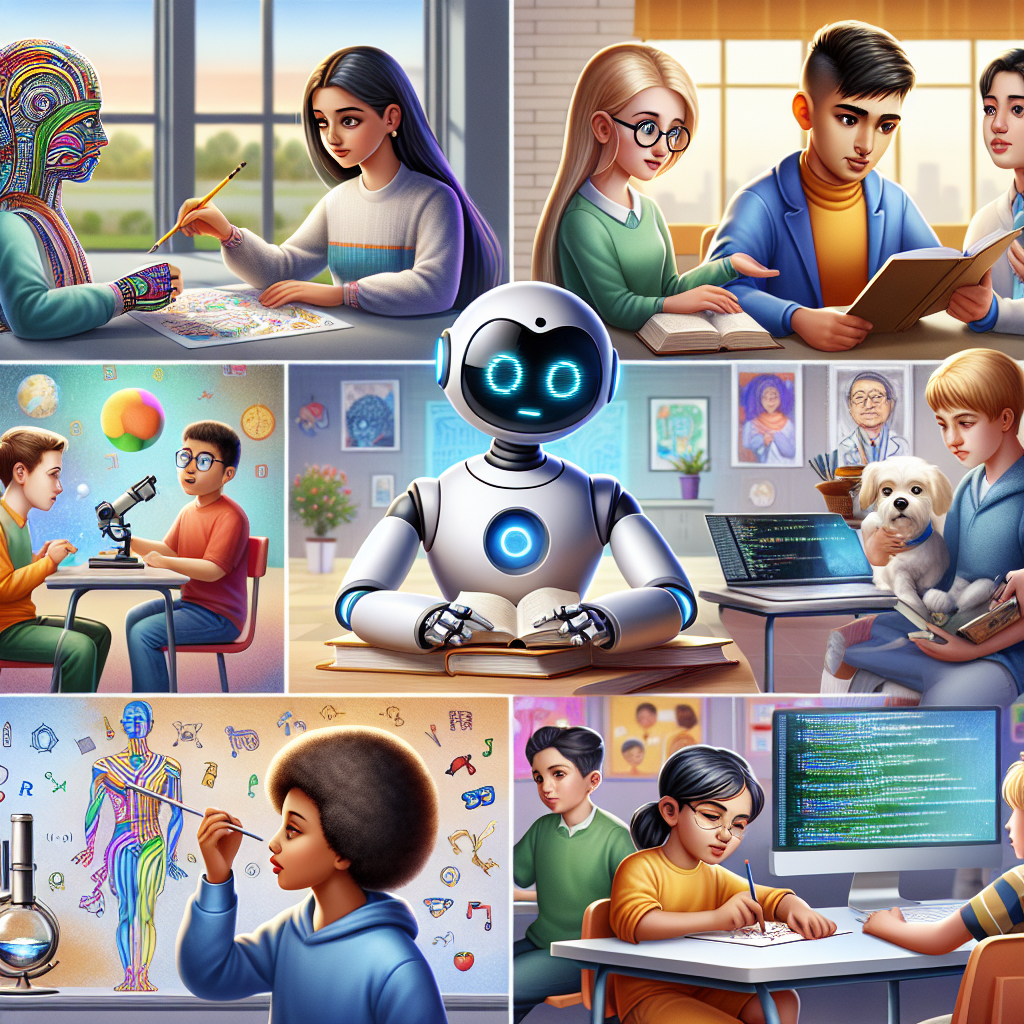Using AI to Support Students with Behavioral Disorders
Behavioral disorders can have a significant impact on a student’s ability to succeed in school. These disorders can manifest in a variety of ways, including difficulties with attention, impulse control, and emotional regulation. For teachers and school administrators, supporting students with behavioral disorders can be a complex and challenging task. However, advances in artificial intelligence (AI) technology are opening up new possibilities for providing personalized support to these students.
AI has the potential to revolutionize education by providing teachers and school administrators with valuable insights and tools to better understand and support students with behavioral disorders. By leveraging AI technology, educators can gain a deeper understanding of each student’s individual needs and tailor interventions to support their learning and behavior.
One of the key ways that AI can support students with behavioral disorders is through the use of predictive analytics. By analyzing data on student behavior, AI algorithms can identify patterns and trends that may indicate potential issues or challenges. For example, AI can analyze data on a student’s attendance, grades, and disciplinary history to identify patterns that may suggest the student is at risk of developing a behavioral disorder. By flagging these patterns early on, educators can intervene proactively to provide support and prevent more serious problems from developing.
Another way that AI can support students with behavioral disorders is through the use of personalized learning tools. AI algorithms can analyze a student’s strengths, weaknesses, and learning style to create personalized learning plans that cater to their individual needs. For students with behavioral disorders, personalized learning tools can be particularly valuable in helping them stay engaged and motivated in their studies. By tailoring learning materials and activities to their specific needs, educators can help these students overcome challenges and succeed academically.
AI can also support students with behavioral disorders by providing real-time feedback and guidance. For example, AI-powered chatbots can be used to provide students with immediate feedback on their behavior and offer suggestions for how to improve. By providing this instant feedback, AI can help students with behavioral disorders develop self-awareness and self-regulation skills, enabling them to better manage their behavior in the classroom.
In addition to supporting students with behavioral disorders, AI can also help educators and school administrators track and monitor the effectiveness of interventions and support strategies. By analyzing data on student behavior and academic performance, AI algorithms can provide insights into which interventions are most effective and which may need to be adjusted. This data-driven approach can help educators make more informed decisions about how to best support students with behavioral disorders and improve outcomes for these students.
Despite the potential benefits of using AI to support students with behavioral disorders, there are also important considerations to keep in mind. It is crucial to ensure that AI technologies are used ethically and responsibly, and that student privacy and data security are protected. Educators and school administrators must also be mindful of the potential biases that can be present in AI algorithms and take steps to mitigate these biases to ensure fair and equitable treatment of all students.
In conclusion, AI has the potential to transform the way educators support students with behavioral disorders in schools. By leveraging AI technology, educators can gain valuable insights into student behavior, provide personalized learning tools, and offer real-time feedback and guidance to help students succeed. While there are important considerations to keep in mind when using AI in education, the potential benefits of using AI to support students with behavioral disorders are significant. By harnessing the power of AI, educators can provide more effective and targeted support to students with behavioral disorders, ultimately helping them reach their full potential.
FAQs
Q: How can AI help educators support students with behavioral disorders?
A: AI can help educators support students with behavioral disorders by providing valuable insights into student behavior, creating personalized learning plans, offering real-time feedback and guidance, and tracking the effectiveness of interventions and support strategies.
Q: What are some examples of AI tools that can be used to support students with behavioral disorders?
A: Examples of AI tools that can be used to support students with behavioral disorders include predictive analytics algorithms, personalized learning tools, AI-powered chatbots for providing feedback, and data analysis tools for tracking intervention effectiveness.
Q: What are some important considerations to keep in mind when using AI to support students with behavioral disorders?
A: It is important to ensure that AI technologies are used ethically and responsibly, protect student privacy and data security, and mitigate potential biases in AI algorithms to ensure fair and equitable treatment of all students.
Q: How can educators ensure that AI is used effectively to support students with behavioral disorders?
A: Educators can ensure that AI is used effectively to support students with behavioral disorders by providing appropriate training and support to staff, collaborating with experts in AI technology, and regularly evaluating and adjusting AI tools and interventions based on student outcomes.

